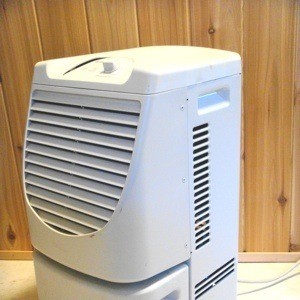
If left untreated, too much moisture indoors can lead to a host of issues, the least of which is the growth of mold and mildew. Dehumidifiers work by removing excess moisture in the air. Here are some tips for getting the most energy savings and efficiency out of your dehumidifier.
Humidifiers fall into three categories: residential, commercial, and industrial. Unless you're working with a very large area or extremely moisture-laden air, most homeowners can get by fine with residential-grade models.
Dehumidifiers vary greatly in size and price. Capacity is measured by the number of pints of water the unit can remove in 24 hours. The size you will need depends on two things: the size of the area to be conditioned and the amount of moisture present in the air. Common residential sizes include 25, 30, and 40-pint models. The Association of Home Appliances recommends a 25-pint model for most areas up to 1000 square feet and a 40-pint model for areas up to 1500 square feet.
To see long-term savings, it's always best to buy the unit that best fits the size of your space. As a general rule of thumb, it's always better to go with a unit slighter larger than you think you need. For example, if you're choosing between two models, one rated for 1000 sq feet and the other for 1200 sq feet, and your space is only 900 sq feet, choose the model with the larger capacity. A larger unit won't have to work as hard to dehumidify the same space as a smaller unit. In addition, a smaller unit will run longer, leading to higher energy costs and greater wear and tear.
One way to assess humidity levels is with an inexpensive humidity gauge. These are available at most hardware stores and big box home centers. A less accurate way is simply to try to "feel" how much moisture is in the air.
Moderately damp: The space feels damp and smells musty only in warm, humid weather.
Very damp: The space always feels damp and smells musty; walls and floor show damp spots.
Wet: The space smells and feels wet. Seepage occurs, mold and mildew are visible.
In the summer, outdoor humidity levels can reach 60 to 80 percent. Indoor relative humidity levels of 40 to 50 percent are generally recommended.

About The Author: Ellen Brown is an environmental writer and photographer and the owner of Sustainable Media, an environmental media company that specializes in helping businesses and organizations promote eco-friendly products and services. Contact her on the web at http://www.sustainable-media.com
Add your voice! Click below to comment. ThriftyFun is powered by your wisdom!
One way to save a little money when using a dehumidifier is to use the full tank of water you have collected to water your plants. Works great and you have to empty it somewhere--why not in a pail to use for a good purpose.
Great idea on reusing the water. Also remember to clean out the water collection area with a little bleach now and then.
Add your voice! Click below to comment. ThriftyFun is powered by your wisdom!